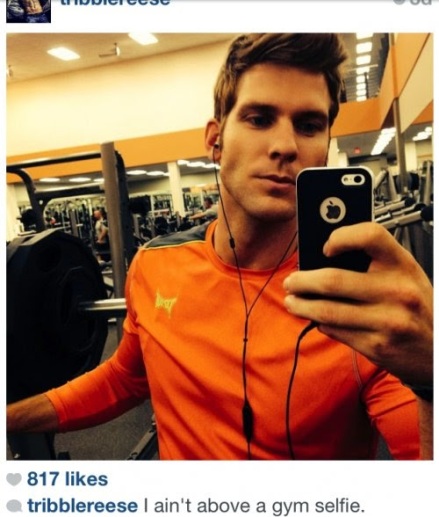
The growing trend of taking smartphone selfies is linked to mental health conditions that focus on a person’s obsession with looks.
According to psychiatrist Dr David Veal: “Two out of three of all the patients who come to see me with Body Dysmorphic Disorder since the rise of camera phones have a compulsion to repeatedly take and post selfies on social media sites.”
“Cognitive behavioural therapy is used to help a patient to recognise the reasons for his or her compulsive behaviour and then to learn how to moderate it,” he told the Sunday Mirror.
A British male teenager tried to commit suicide after he failed to take the perfect selfie. Danny Bowman became so obsessed with capturing the perfect shot that he spent 10 hours a day taking up to 200 selfies. The 19-year-old lost nearly 30 pounds, dropped out of school and did not leave the house for six months in his quest to get the right picture. He would take 10 pictures immediately after waking up. Frustrated at his attempts to take the one image he wanted, Bowman eventually tried to take his own life by overdosing, but was saved by his mom.
“I was constantly in search of taking the perfect selfie and when I realized I couldn’t, I wanted to die. I lost my friends, my education, my health and almost my life,” he told The Mirror.
The teenager is believed to be the UK’s first selfie addict and has had therapy to treat his technology addiction as well as OCD and Body Dysmorphic Disorder.
Part of his treatment at the Maudsley Hospital in London included taking away his iPhone for intervals of 10 minutes, which increased to 30 minutes and then an hour.
“It was excruciating to begin with but I knew I had to do it if I wanted to go on living,” he told the Sunday Mirror.
Public health officials in the UK announced that addiction to social media such as Facebook and Twitter is an illness and more than 100 patients sought treatment every year.
“Selfies frequently trigger perceptions of self-indulgence or attention-seeking social dependence that raises the damned-if-you-do and damned-if-you-don’t spectre of either narcissism or very low self-esteem,” said Pamela Rutledge in Psychology Today.
The addiction to selfies has also alarmed health professionals in Thailand. “To pay close attention to published photos, controlling who sees or who likes or comments them, hoping to reach the greatest number of likes is a symptom that ‘selfies’ are causing problems,” said Panpimol Wipulakorn, of the Thai Mental Health Department.
The doctor believed that behaviours could generate brain problems in the future, especially those related to lack of confidence.
The word “selfie” was elected “Word of the Year 2013″ by the Oxford English Dictionary. It is defined as “a photograph that one has taken of oneself, typically with a smartphone or webcam and uploaded to a social media website”.
1. The Gym Selfie (Because the checkin isn’t enough.)


2. The Pet Selfie (If you want to post a picture of your pet, post a picture of your pet.)
Unless this happens, then it’s ok:

3. The Car Selfie AKA The Seatbelt Selfie (You LITERALLY got in the car and thought, “I look so good today, I better let everyone know before I put this thing in drive and head to my shift at the Olive Garden.”)


If you can combine the Seatbelt Selfie with the beloved Shirtless Selfie like this unattractive fella below, you..are…GOLD.

4. The Blurry Selfie (Why?)

5. The Just Woke Up Selfie

Yeah right you just woke up.
6. Or even worse, the Pretending to Be Asleep Selfie. (We know you’re not asleep, asshole. You took the damn picture.)


7. The Add a Kid Selfie (Extra points for a C-section scar.)

8. The Hospital Selfie (A rare gem. The more tubes you have hooked up to you, the better.)

9. The “I’m On Drugs” Selfie (This looker below also qualifies as theLook At My New Haircut Selfie.)

10. The Duck Face Selfie (Hey girls. This doesn’t make you prettier. It makes you look stupid and desperate. If that’s what you’re going for, carry on.)


11. The Pregnant Belly Selfie (Send this to your family and friends, not the entire Internet.)

And yes, that’s a pregnant belly duck face selfie. It’s the unicorn of awful selfies.
12. The “I’m a Gigantic Whore” Selfie

Nice phone case, by the way.
13. The “I Have Enough Money to Fly On an Airplane” Selfie (AND I own earbuds.)

14. The 3D Selfie. (It takes talent…along with class.)

15. The Say Something That Has Nothing To Do With Anything Selfie(You had a great night? Oh.)

16. The “I Live In Filth” Selfie (We all make messes, but if you’re going to post your living quarters on the World Wide Web, pick up your damn room.)

Source: Disclose.tv via Why Don’t You Try This

 Pregnant women run a serious risk of becoming ill from the bacteria Listeria which can cause miscarriage, fetal death or illness or death of a newborn. If you are pregnant, consuming raw milk – or foods made from raw milk, such as Mexican-style cheese like Queso Blanco or Queso Fresco – can harm your baby even if you don’t feel sick.
Pregnant women run a serious risk of becoming ill from the bacteria Listeria which can cause miscarriage, fetal death or illness or death of a newborn. If you are pregnant, consuming raw milk – or foods made from raw milk, such as Mexican-style cheese like Queso Blanco or Queso Fresco – can harm your baby even if you don’t feel sick. and Mexican-style soft cheeses such as Queso Fresco, Panela, Asadero, and Queso Blanco made from pasteurized milk
and Mexican-style soft cheeses such as Queso Fresco, Panela, Asadero, and Queso Blanco made from pasteurized milk





